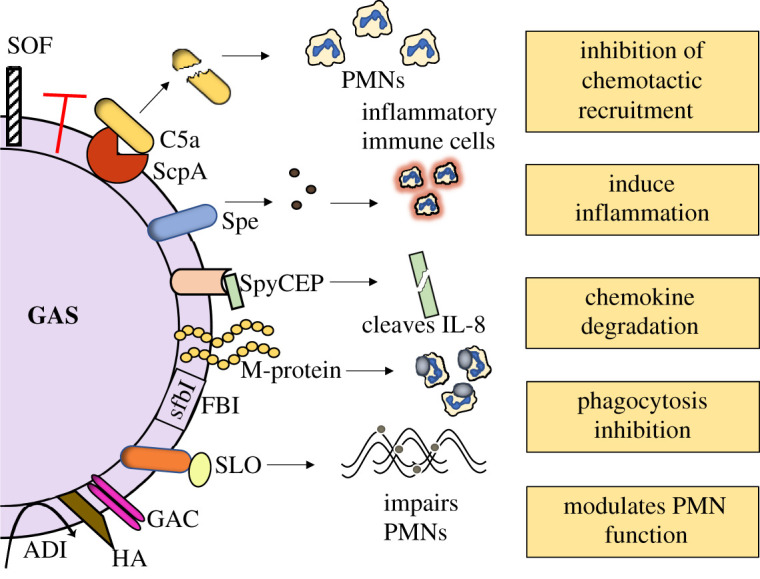Figure 1.

Virulence factors of GAS. A variety of antigens on the surface of the GAS are involved in virulence. Each of the displayed antigens have been well documented for their association to impair the host immune system. GAS produces several secreted toxins that cleave human proteins. Examples are ScpA, which cleaves the chemoattractant C5a and spyCEP cleaves neutrophil attracting chemokines, e.g. IL-8 on PMNs. This in turn inhibits the phagocyte recruitment. M-proteins bind to the components of the immune system thereby conferring resistance to phagocytosis. SLO impairs neutrophil function, whereas the carbohydrates GAC and HA promote GAS survival within the human blood. Abbreviations: NETs – Neutrophil extracellular traps; PMNs – Polymorphonuclear leukocytes; ScpA, streptococcal C5a peptidase; Spe, streptococcal pyrogenic exotoxin; SpeA, streptococcal pyrogenic exotoxin A; spyCEP, streptococcal pyogenes cell envelope protease; GAC, Group A Carbohydrate; FBI, fibronectin-binding protein; sfbI, S. pyogenes fibronectin-binding protein; SOF, serum opacity factor; ADI, arginine deaminase; HA, hyaluronic acid capsule; GAS, Group A Streptococcus.
